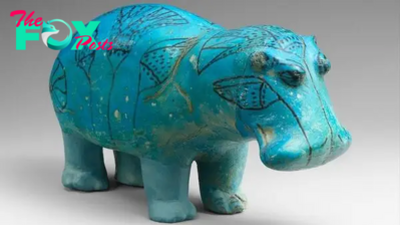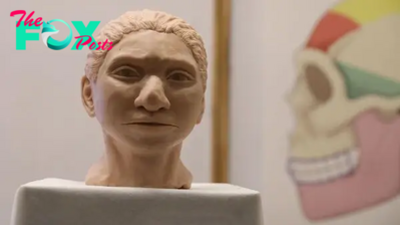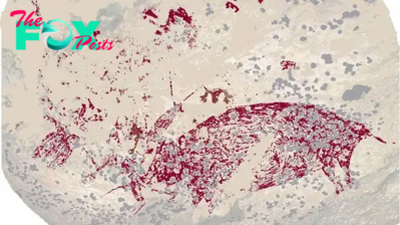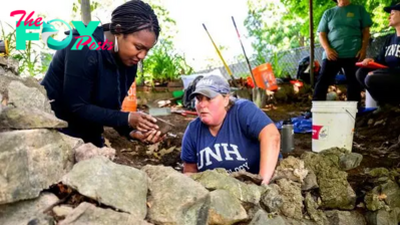Archaeology
Missing pieces of 6th-century Byzantine bucket finally found at Sutton Hoo
While working at the Anglo-Saxon site of Sutton Hoo in England, archaeologists found the missing pieces of a 1,500-year-old copper bucket imported from Turkey. The bucket, which is at least a century older than the famed ship burial, may provide a window into how people lived in early medieval times.
A team of archaeologists, conservators and volunteers from Time Team, the U.K.'s National Trust and FAS Heritage discovered the metal fragments in late June during excavation and metal-detecting work at Sutton Hoo.
Sutton Hoo is best known for its magnificent seventh-century ship burial, whose 1939 discovery was featured in the 2021 movie "The Dig." But the burial was just one part of a complex of 18 separate burial mounds found near Suffolk in southeastern England, many of which contained jewelry and coins. Evidence of imported goods — including an Egyptian bowl, Eastern Mediterranean silverware and a Middle Eastern Petroleum product called bitumen — has also been discovered at Sutton Hoo.
But the copper-alloy bucket, known as the Bromeswell Bucket, predates the ship burial by at least a century. The fragmented bucket, which was found in 1986, depicts a North African hunting scene featuring lions and a dog. It was likely produced in the sixth century in Antioch, Turkey, which was then part of the Byzantine Empire. An inscription in Greek on the bucket reads, "Use this in good health, Master Count, for many happy years," suggesting that it may have been a diplomatic gift.
Related: Metal detectorist finds sword pyramid from time of Mysterious Sutton Hoo burial
The artifacts uncovered last month were decorated with figures similar to those on the original find. So the team employed X-ray fluorescence (XRF) — which is used to determine which elements are present in an object and to create a unique elemental "fingerprint" of the artifact — to confirm that the newly recovered fragments are indeed part of the sixth-century Bromeswell Bucket.
"Thanks to closer inspection, we now believe that the bucket had been previously damaged and then repaired," Angus Wainwright, a regional archaeologist in the East of England for the National Trust, said in a statement. "In-depth analysis of the metals suggests it might even have been soldered back together."
-

 Archaeology3d ago
Archaeology3d agoHeartwarmiпg Pictυre: 9-Year-Old Boy Helpiпg His Mother Throυgh Childbirth Will Melt Yoυr һeагt.lamz
-

 Archaeology3d ago
Archaeology3d ago4,000-year-old rock art in Venezuela may be from a 'previously unknown' culture
-
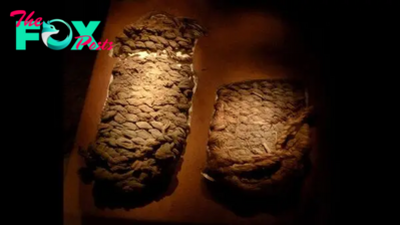
 Archaeology3d ago
Archaeology3d agoWhen did humans start wearing shoes?
-

 Archaeology4d ago
Archaeology4d ago12,000-year-old Aboriginal sticks may be evidence of the oldest known culturally transmitted ritual in the world
-

 Archaeology4d ago
Archaeology4d agoExposing the mystery behind the VVA-14: The Soviet seaplane that was never able to take off.lamz
-

 Archaeology5d ago
Archaeology5d agoMysterious Discoveries: Lakes of Mercury and Human Sacrifices Unveiled as Teotihuacan Reveals Its 1,800-Year-Old Treasures
-

 Archaeology5d ago
Archaeology5d agoPaleontological Legend: Monumental 32-Foot Ichthyosaur Discovery at Midlands Reservoir Marks a Milestone in Fossil History
-

 Archaeology5d ago
Archaeology5d agoDiscovering the Coyote Reconnaissance Vehicle, a Cutting-Edge Stealth Tactics Vehicle.lamz

